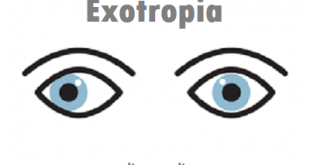What is called Aphakia?
Aphakia is a condition in which you’re missing the lens of one or both of your eyes. You can be born that way or lose the lens due to an injury. Or your doctor might remove it during an operation for cataracts. When you have aphakia, it’s hard to see things clearly with the affected eye. But doctors can correct it with surgery, special glasses, or contact lenses.
Pathophysiology
The pathophysiology is dependent on the mechanism involved and includes the following: distortion of the anterior chamber angle, viscoelastics, inflammation, hemorrhage, pigment dispersion, ghost cell, vitreous in the anterior chamber (AC), pupillary block (pseudophakic/aphakic), malignant glaucoma, and posterior capsulotomy.
Causes and risk factors of Aphakia
Cataracts
Cataracts can make your eyes look milky and cause cloudy vision. They’re caused by proteins clumping together on the lens, which tends to happen with age. This makes it harder for your lens to refract light on your retina, resulting in cloudy vision. Cataracts are very common, affecting about 24.4 million Americans who are 40 or older, according to the American Academy of Ophthalmology.
In rare cases, babies are born with cataracts. This is usually due to genetics or exposure to certain diseases, such as chickenpox.
Talk to your doctor if you or your baby have cataract symptoms so they can rule out any other eye problems.
Genetics
Some babies are born without eye lenses. This category of aphakia has two types, called primary congenital aphakia and secondary congenital aphakia.
Babies with primary congenital aphakia are born without lenses, usually due to developmental issues or a genetic mutation.
Babies with secondary congenital aphakia have a lens, but it’s either absorbed or detached before or during birth. This type of aphakia is also associated with exposure to a virus, such as congenital rubella.
Injuries
Accidents and injuries to your face can damage your lens or cause it to detach inside your eye.
Aphakia symptoms
The primary symptom of aphakia is the lack of an eye lens. This issue can lead to other symptoms, such as:
- Blurry vision
- Difficulty focusing
- Problems with color vision (colors appearing faded)
- Light sensitivity
- Trouble seeing objects up close (farsightedness)
- Issues with focusing on an object as you move closer to or farther away from it
Possible complications from Aphakia
Most people recover from aphakia with no complications. However, there are a few things that can go wrong:
Aphakic glaucoma. If a person has surgery to treat aphakia, one of the risks is aphakic glaucoma, a condition in which pressure inside the eye builds up to the point that it damages the optic nerve. Untreated glaucoma can lead to vision loss.
Retinal detachment. If your aphakia is the result of an eye injury, you may also experience retinal detachment. If you see spots or flashes of light, notice that you see colors differently, or lose your peripheral vision, see your eye doctor immediately because this condition can lead to total blindness without treatment.
Vitreous detachment. The vitreous humor (a gel-like substance inside the eye) can pull away from the retina. In and of itself, this doesn’t typically cause any issues. However, in some cases, the vitreous humor pulls on the retina so hard that it causes damage, such as a hole in the retina or retinal detachment. If you are diagnosed with vitreous detachment, see your eye care practitioner regularly to be sure that it isn’t causing any significant problems.
How is Aphakia diagnosed?
Your eye doctor can determine whether you have aphakia by examining you and looking at your medical history. There may be additional reason to suspect aphakia if you have previously had cataract surgery. There are several signs that can indicate a missing lens:
- A scar in the limbal ring (the black ring around the iris); this may be apparent in a person who has undergone surgery
- Iridodonesis — the iris jiggles because it lacks the support of the lens
- The finding of a small hypermetropic fundus (the fundus is the interior surface of the eye, opposite the lens, and hypermetropic means that the eyeball is too short, so light doesn’t focus clearly on the retina, but rather behind it)
An eye examination is performed to determine your visual acuity/prescription (distance, near vision, refraction). If you suffer from aphakia, this will confirm the absence of the lens. The cornea, iris, anterior chamber, and fundus will be examined and your eye pressure will be tested.
How is Aphakia treated?
Aphakia treatments include:
- Surgery: This is the most usual treatment for aphakia. Your surgeon will replace your damaged lens with an IOL (intraocular lens).
- Contact lenses: Your provider may suggest that you or your baby wear special (aphakic) contact lenses. These lenses are very high-powered. Some types used for infants can be left in for multiple days at a time, but some need to be changed daily.
- Glasses: If you have bilateral aphakia (missing lenses in both eyes), your provider might suggest wearing glasses. However, these types of glasses might cause issues. The glasses might be heavy. The lenses might cause you to perceive straight lines as curving inward (this is called the pincushion effect). You might have problems with depth perception. You might have cosmetic objections. Because of these issues, your provider is more likely to suggest contact lenses.
What Is the Prognosis for Aphakia?
The prognosis for patients with aphakia is usually good unless there are complications. During childhood, the size of the eye and the refractive error change rapidly. Optical correction in children requires frequent adjustments to ensure that optimal vision is maintained. Failure to make these changes in a timely manner may result in permanent visual loss.
How can I reduce my risk of Aphakia?
There’s no way to prevent aphakia, but you can do things to maintain your vision. For instance, you can:
- Get regular eye exams
- Use protective glasses when working or participating in vigorous activity
- Wear sunglasses
- Eat a healthy diet that includes green leafy vegetables
- Quit smoking
- Stay active
 Diseases Treatments Dictionary This is complete solution to read all diseases treatments Which covers Prevention, Causes, Symptoms, Medical Terms, Drugs, Prescription, Natural Remedies with cures and Treatments. Most of the common diseases were listed in names, split with categories.
Diseases Treatments Dictionary This is complete solution to read all diseases treatments Which covers Prevention, Causes, Symptoms, Medical Terms, Drugs, Prescription, Natural Remedies with cures and Treatments. Most of the common diseases were listed in names, split with categories.







